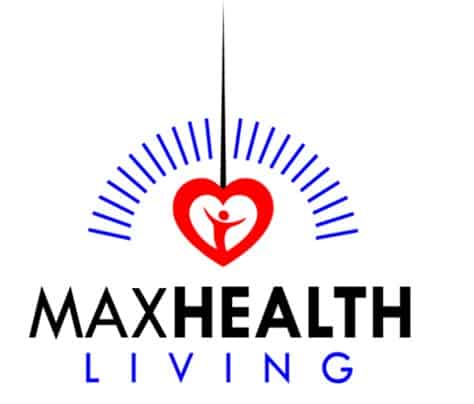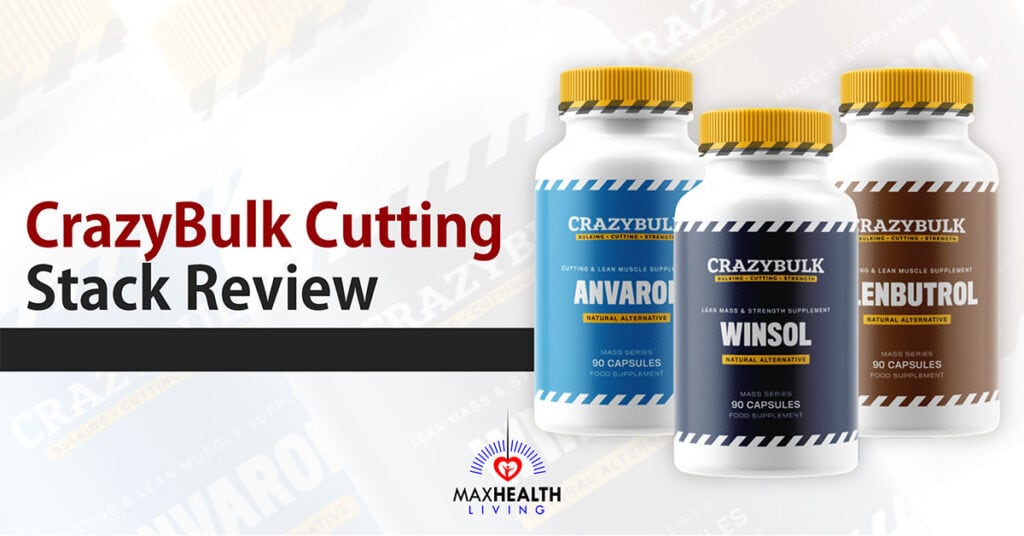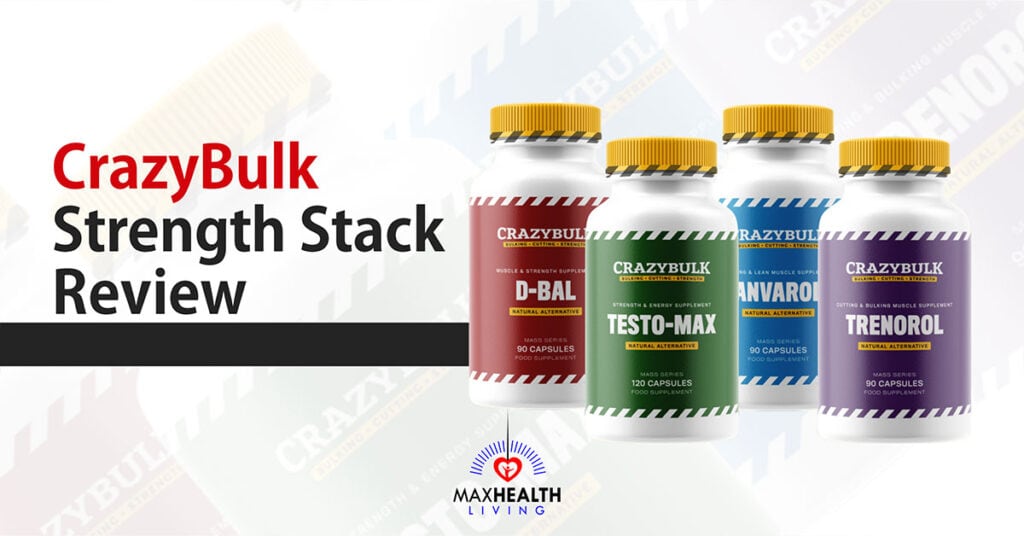Are Rest Days Important for Building Muscle? (how good?)
Max Health Living is a reader-supported site. Purchases made through links may earn a commission. Learn more.
Everybody wants to know the best workout for building muscle – but what about recovery?
Are rest days important for building muscle?
What do they do – and why are they treated with so much importance?
Today, we’re working through the main reasons you should schedule days away from the gym, giving your body a chance to recover, and what you should do on rest days.
How Do You Build Muscle?
How do you build muscle? That’s an important place to start if you want to use rest days to build more muscle mass, get bigger, and look better.
Muscle develops in a relatively simple 3 step process that you can use to your advantage:
- Stress: You put your muscles under mechanical and metabolic demands with exercise
- Recovery: You rest, put nutrients to work repairing and replacing tissues
- Adaptation: You grow as your body overcompensates in response to stress
The three steps of this process are more of a sliding scale from one to the next.
Recovery and adaptation overlap very closely, with rest days making up most of these benefits.
The time you put into recovery and adaptation is a huge deal – despite training being a necessary first step!
People who make better results are those who recover and adapt most effectively. You want to make sure that every training session is as good as possible and is followed by the best recovery possible, setting you up for another great workout.
This cycle is how you use rest days for building muscle.
Why Are Rest Days Important?
The main benefit of rest days is taking time not to stress the muscles and providing dedicated time for recovery.

After a workout, your body requires time and energy to repair damaged tissues. It also requires time and recovery resources to remodel your existing tissues, which allows you to get stronger, grow muscle, and repair tendons and ligaments.
During this time, muscle proteins are synthesized – a crucial and time-sensitive process.
During this period, too much training without rest can disrupt muscle growth and lead to overtraining or even detraining as your body struggles to keep up with your exercise demands.
Neural Recovery for Speed and Power
Resting doesn’t just involve relaxing your muscles and giving them time and resources to recover. It also means giving other structures – like the nervous system – the time it needs to repair and recover.
The chemistry of your body’s internal communication (with itself) also gets tired through heightened exercise stress and low recovery. Rest days help you reset and allow things like the neuromuscular junction and the pathways in your brain to rest and recuperate.
These changes aren’t just for muscles and strength – they help you repair speed and power, coordination, balance, and other athletic traits.
Rest days are important not just for their role in the muscles but also for the rest of the body.
Injury risk
Many of the best benefits of rest days aren’t immediately clear. While muscles feel better for time off, some of the most important but least obvious risks to the body and health are tied to a good ratio of days training to days resting.
For example, the breakdown of tendons and ligaments is very slow as exercise demands and activity outpace your recovery.
Without rest days, these tissues would not be able to get the recovery they need – as you keep piling up demand without recovery.
Time off directly improves your resilience to injury.
Not-training: Time On vs. Off and the Importance of Proportions
One of the most important things you need to remember about rest days is that they’re not only days for more rest and recovery but not training days.
When you add another session to your week, you take away a day dedicated to rest. This has a profound change in your recovery. Let’s say you’re training three days a week and want to go to 4 – that’s not only a 33% increase in training stress but a 25% reduction in recovery time.
The effect of rest days is huge for limiting the amount of time spent in the gym, and the time is dedicated to other things. The best examples are stretching, mobility, active recovery exercise, and just time spent eating nutritious food to support recovery.
These things help you make more gains between sessions and repair muscle damage. If you’re neglecting them or rushing to add more workouts to your week, you could be sabotaging your recovery process.
Rest days are not just to space out workouts – but a time to put effort into dedicated improvements, recovery, and letting your mind relax.
How To Spend Rest Days?
The best rest days are spent putting yourself through positive physical experiences that support recovery – not just curling up on the sofa. Reducing activity levels is an important part of the process, but it needs to be balanced against movement to stimulate blood flow.
Light activity that doesn’t stress the muscles or joints excessively during rest days – also called active recovery – helps prevent soreness and improve muscle chemistry.
This can help prevent fatigue and performance loss in your next workout and thus support long-term muscle gains.
The best forms of active recovery include low-intensity swimming and cycling, a comfortable walk, mobility, stretching exercise, light yoga, and low-intensity, moderate-duration activity or sport.
The point is to turn the effort down and stay moving.
This helps improve blood flow to muscles – but specifically to low-vascularity joints.
These have limited recovery by themselves and depend on regular movement to flush nutrient-rich blood into the tendons and ligaments, supporting better recovery while also supporting muscular recovery and (as a result) growth.
Rest Day FAQs for Building Muscle
How Many Rest Days Do You Need to Build Muscle?
The amount of rest days you need to build muscle depends on the workouts you’re performing and how long you’ve been training.
More workouts mean more rest days, wherever possible, and more time training allows you to perform more workouts in a row without rest.
- The average beginner needs around 3-4 rest days per week.
- The average intermediate needs 2-3 rest days per week.
- The average advanced trainee will only need 1-2 rest days per week.
However, you can build muscle with any amount of rest days as long as you’re training 2-3 times a week minimum. These are the basics, and the real question is how much can you recover from?
That’s something you’ll only find out by trying different workout programs!
Do Your Muscles Grow on Rest Days?
There’s an old saying that you don’t build muscle when you work out – you build muscle when you’re resting. And this is 100% true – the actual spur for growth is the nutrition and rest you get between workouts.
Muscles grow through rest periods when you’ve got enough energy and protein availability after stimulating them. This starts during post-workout rest, but primarily during sleep.
Rest days are a great time of dedicated growth and recovery if you’re not over-exerting yourself.
Rest days should be spent relaxing with light movement, mobility training, and more sleep than normal – if you can! Rest days are a chance to put effort into other parts of your lifestyle like diet and mobility.
Do You Really Need Rest Days for Bodybuilding?
Yes – bodybuilding requires rest days to balance up your training and recovery time.
This is an important balance – especially in natural bodybuilding. Muscle growth depends on the cycles of stress, recovery, and adaptation mentioned above – and rest days are a key part of the recovery and adaptation process.
Rest days should be regular, ideally 1-4 a week, depending on how you train and how experienced you are.
The heavier each session is, the fewer you can use in a row without a rest day – especially for larger muscle groups like the legs and back.
How Many Rest Days Per Week?
The number of rest days you need per week depends on how you train and how heavy each session is.
Heavy full-body exercise will typically require a rest day every session or two, while body part splits often revolve around 1-2 rest days per week (and are lighter overall).
Rest days should be built around your workout program and experience – those with more training experience can have fewer rest days per week. It’s always important to give your body time to rest and it’s typically better to have too much rest, rather than not enough.
Most beginners rush to add workouts, when they should add more conscious effort to food, sleep, and resting regularly.
Optimal Rest Days for Muscle Growth
There are no optimal rest days for everyone – you need to figure out the number of rest days you need for your training and experience. It’s something you work out over time as your workout programs become more and more specific to your needs.
This is why elite – and even semi-elite – bodybuilders have coaches.
There’s a trial-and-error to the workout process and you need to adapt as you go, making sure to listen to your own body and how you respond to different rest-vs-training ratios.
Signs You Need a Rest Day
You need a rest day if you’ve noticed unwanted performance decline in your workouts or feel particularly “worn down”. That means easily ill, uncharacteristically irritable, and poor quality or fragmented sleep.
You will also need a rest day if you find yourself experiencing cramps and other problems more often than usual. These can be signs of poor muscular chemistry during exercise-induced muscle damage – meaning you need more rest days for dedicated recovery time.
Finally, an odd one is if you’re struggling to get a pump despite working hard.
This could result from muscle damage blocking carb reuptake, which might be why you’re struggling to get a pump. This is a good sign that your muscles need more time off to repair performance and help you gain more muscle.
What Should You Do on Rest Days?
Rest days should take exercise intensity way down to minimal levels, focusing more on proper recovery than anything else. That means focusing on sleep, low-impact exercise, and mobility or stretching.
There should also be a general effort towards more relaxing and anti-anxiety habits.
Things like reading, socializing and engaging in your favorite low-intensity hobbies. These help with the nervous system and hormonal changes towards rest, recovery, and growth that make muscle growth possible.
Final Thoughts
Rest days are a crucial part of the muscle-building process, and they provide both negative (not training) and positive (time dedicated to recovery) benefits.
These make rest days twice as important as most people seem to think, and losing even one rest day completely changes a week of workouts.
Put time and effort into understanding, planning, and committing to relaxing rest days. They make everything you’re trying to achieve happen, and they should be spent to restore your body’s natural balance – the foundation for growth and performance improvements.
The more effort you put into recovering, the more resources you’ll have to spend on harder, better workouts and the extra muscle growth that comes from recovering properly between sessions.
Important Disclaimer: The information contained on MAX HEALTH LIVING is intended for informational and educational purposes only. Any statements made on this website have not been evaluated by the FDA and any information or products discussed are not intended to diagnose, cure, treat, or prevent any disease or illness. Please consult a healthcare practitioner before making changes to your diet or taking supplements that may interfere with medications.
Who We Are

We are a team of fitness, health, and supplement experts, and content creators. Over the past 4 years, we have spent over 123,000 hours researching food supplements, meal shakes, weight loss, and healthy living. Our aim is to educate people about their effects, benefits, and how to achieve a maximum healthy lifestyle. Read more.



